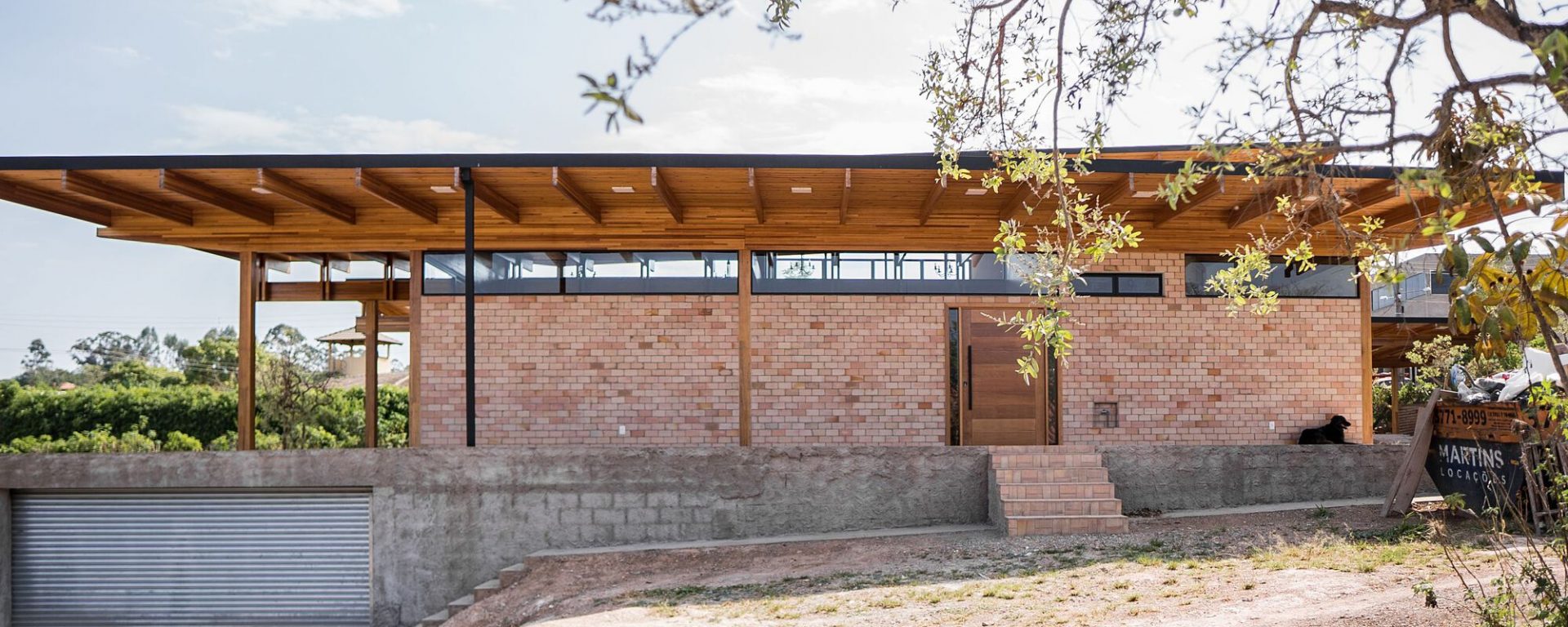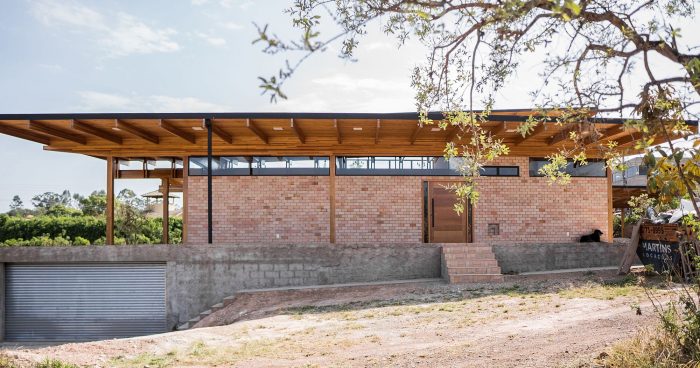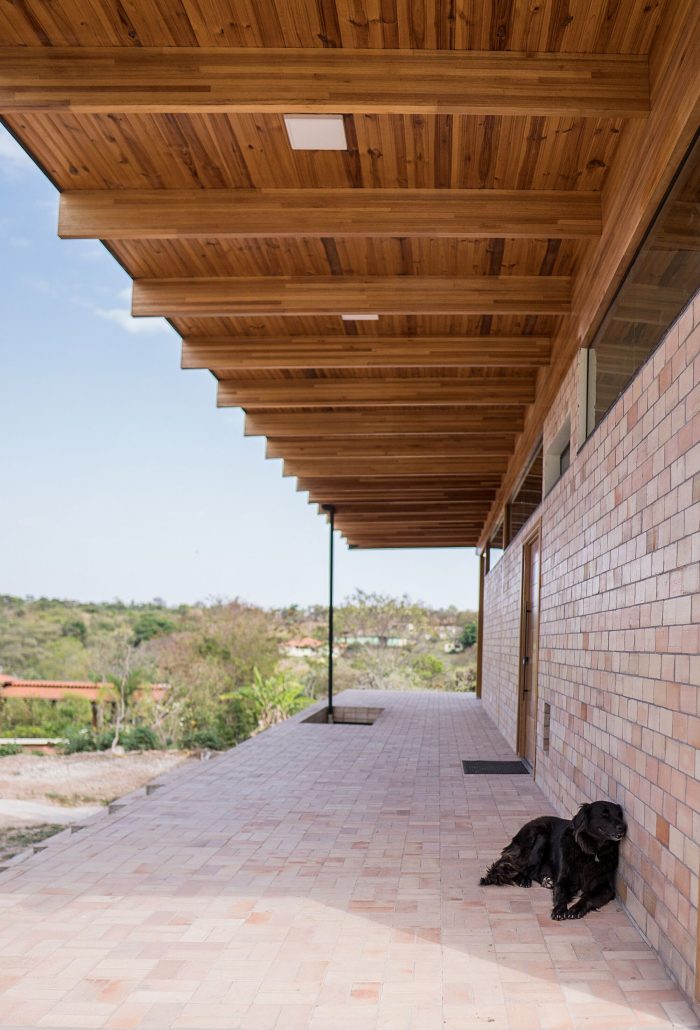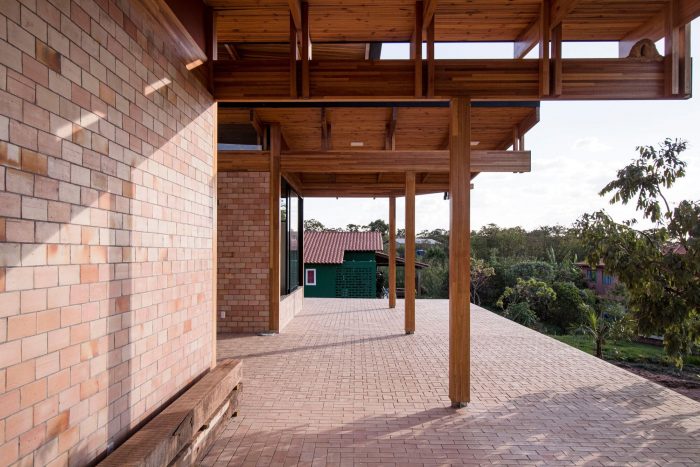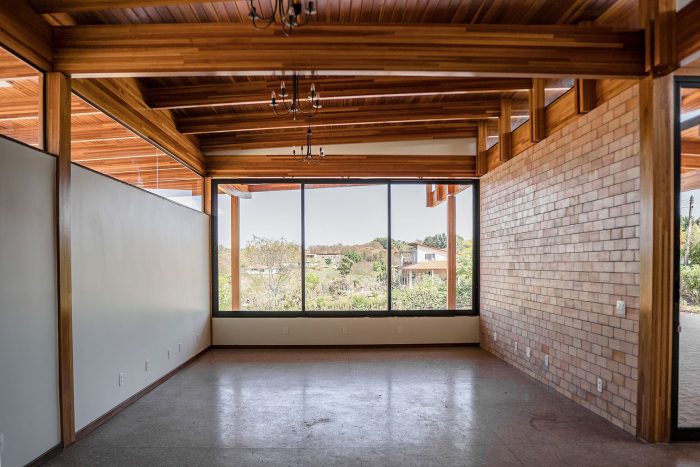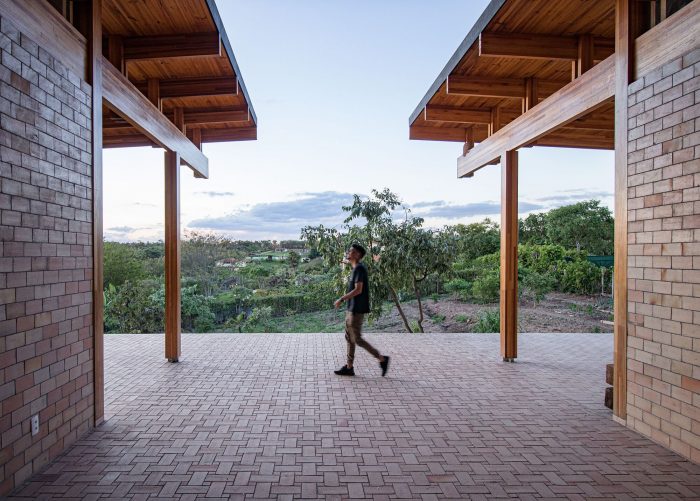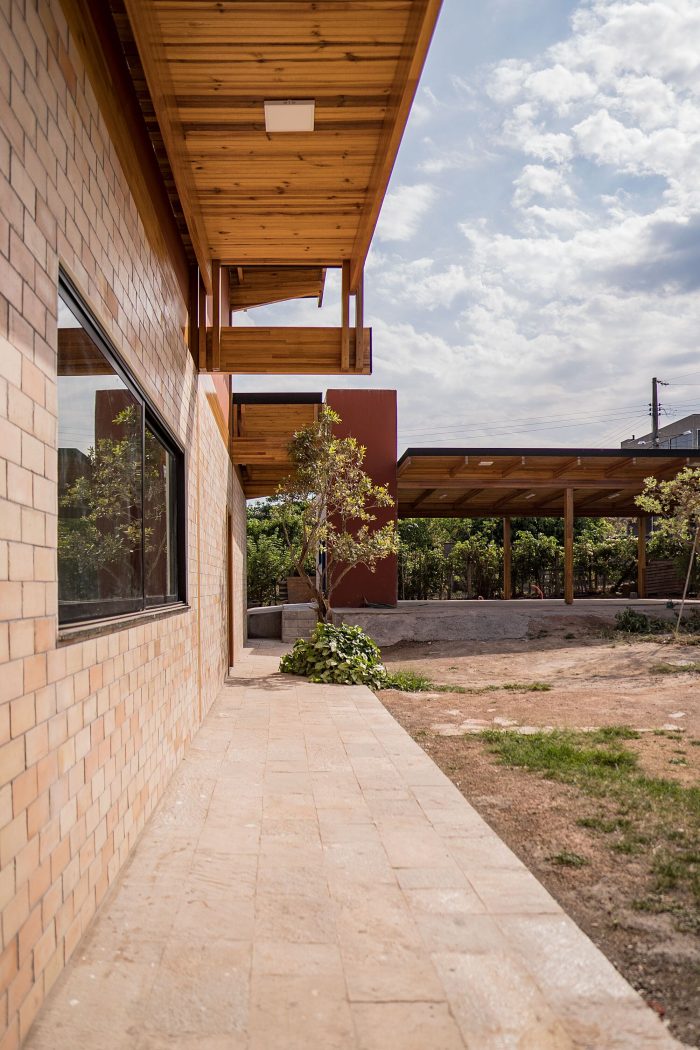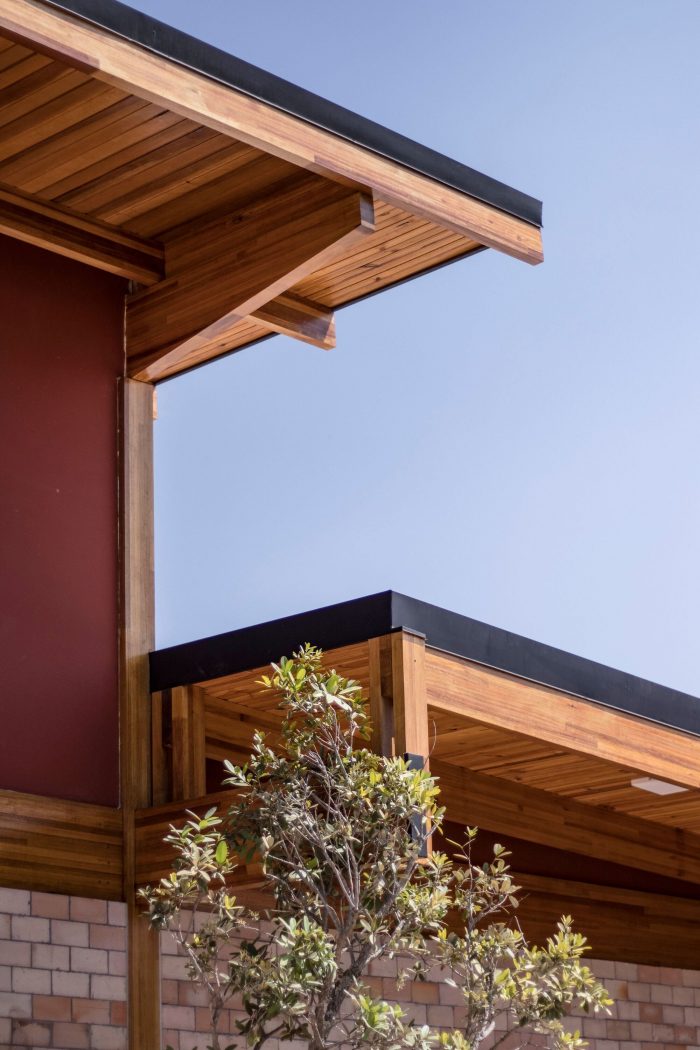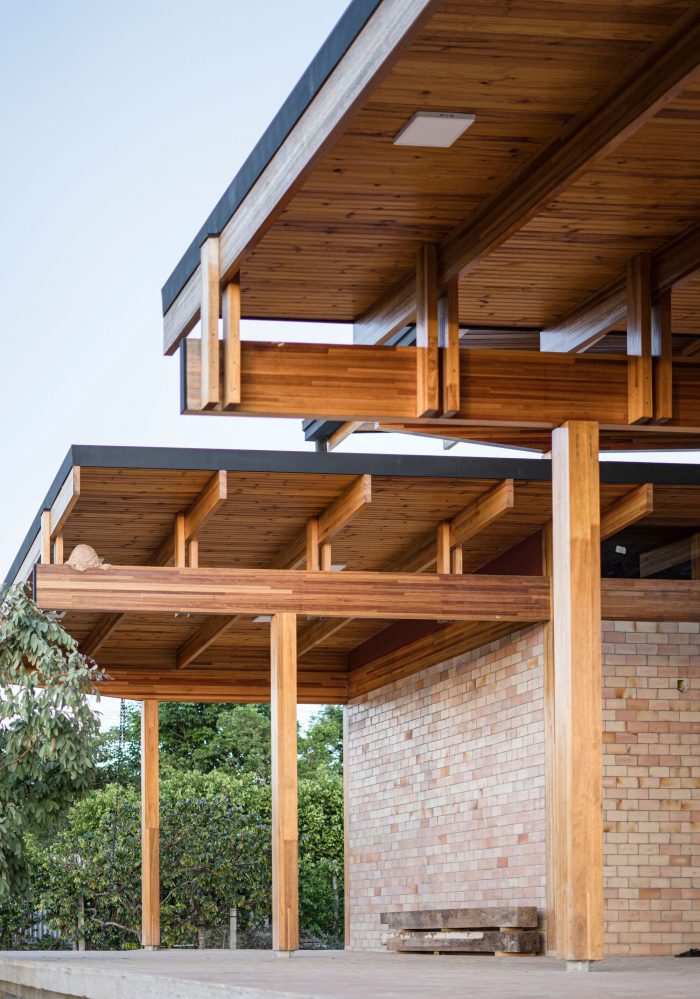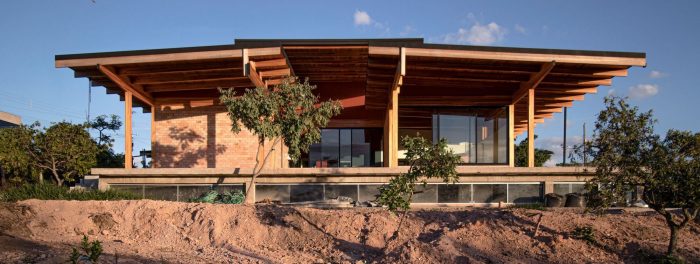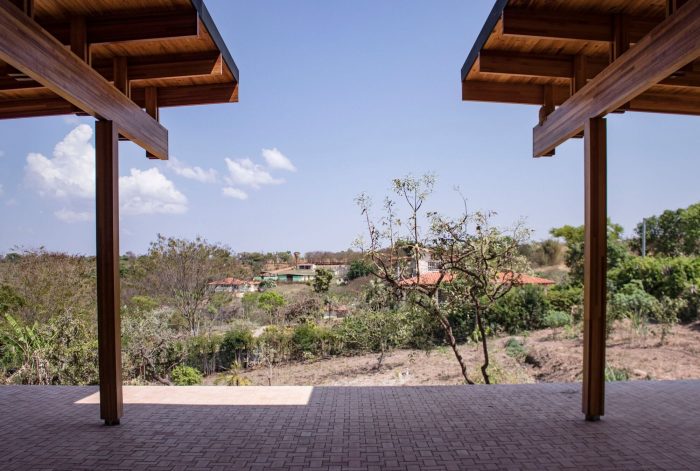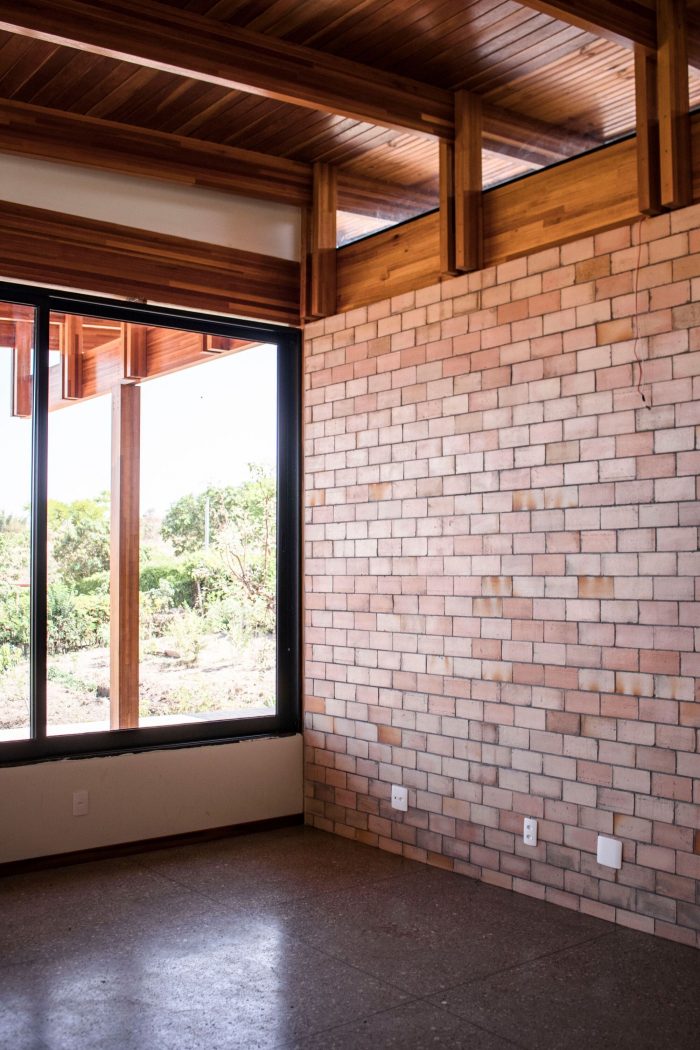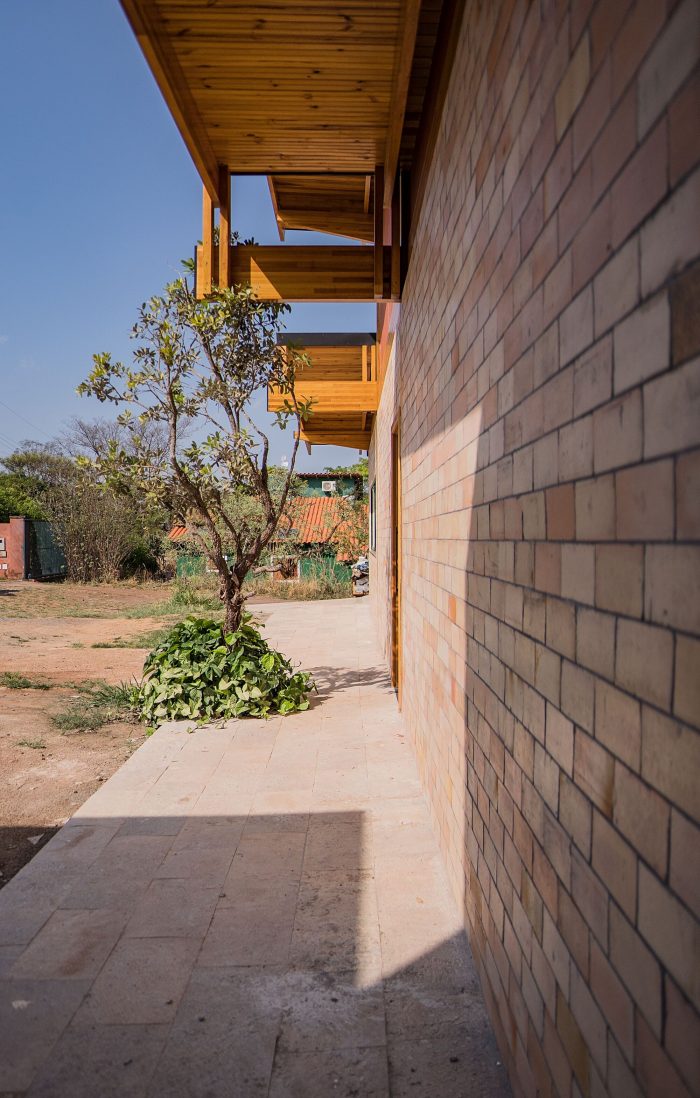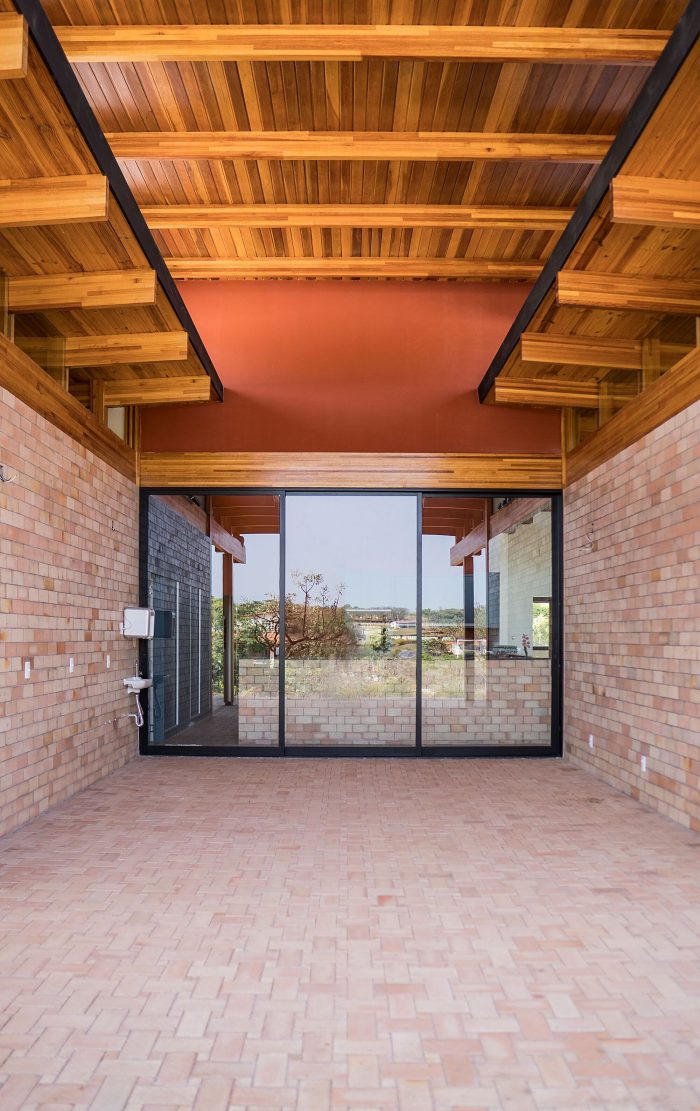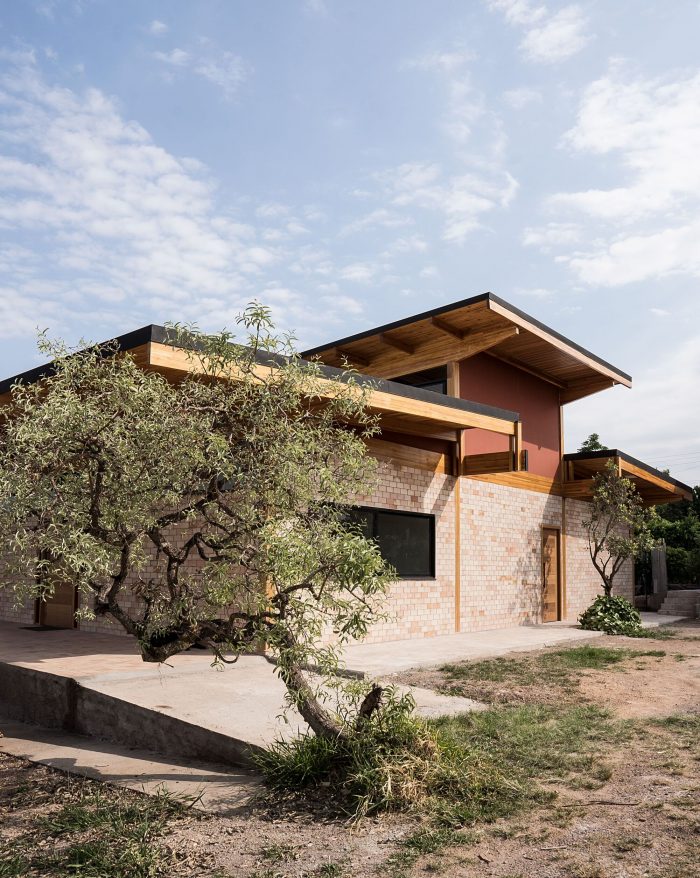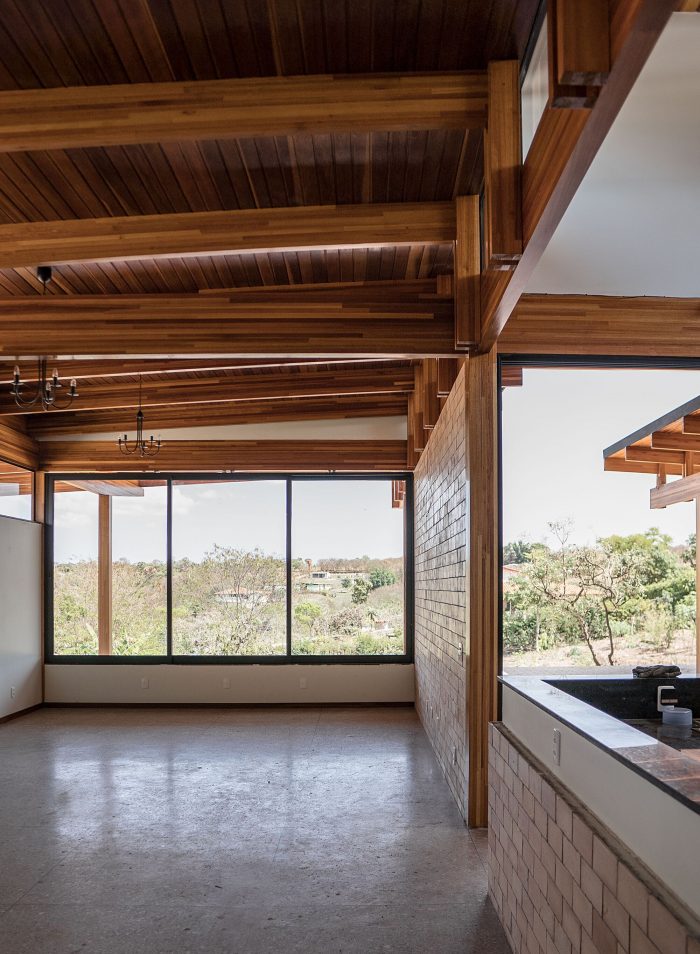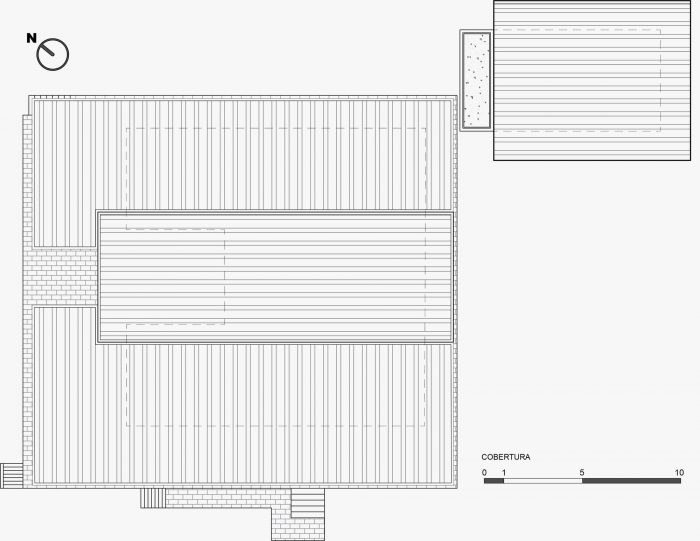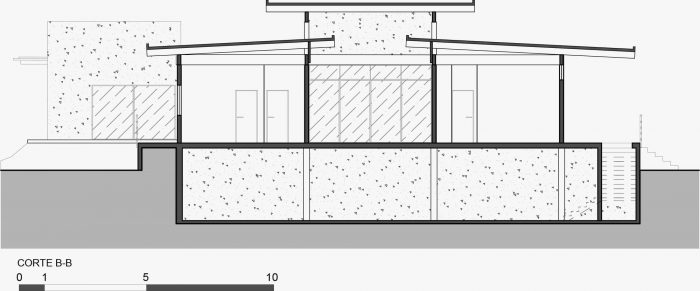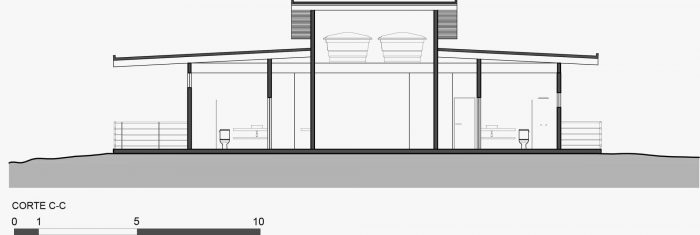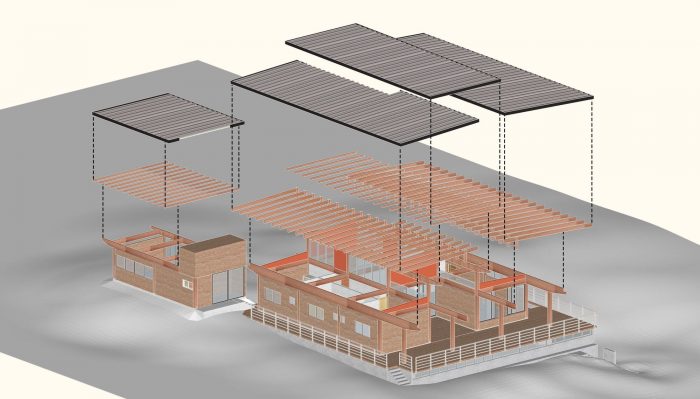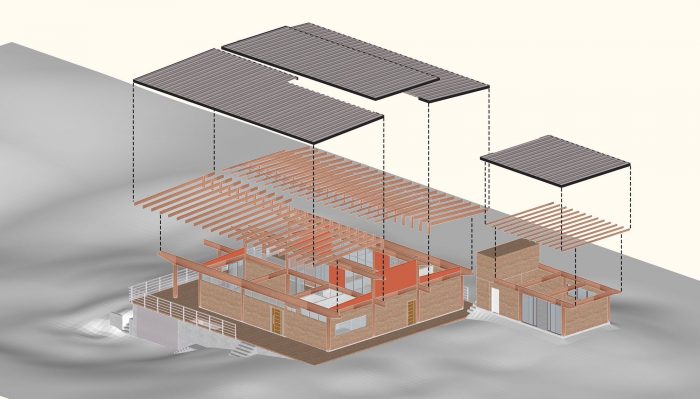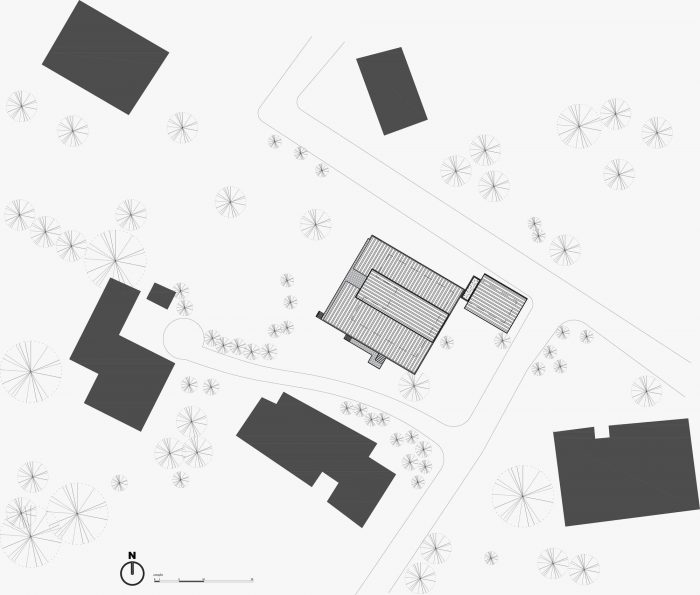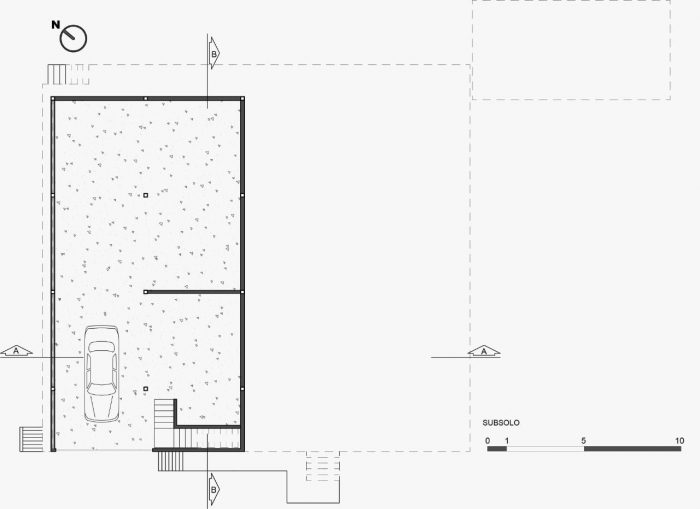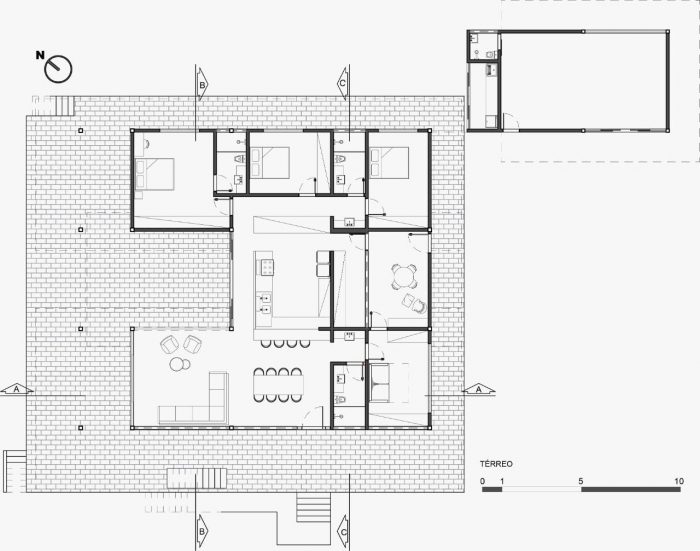漂浮屋是根据联邦区的一个土地点设计的,可以看到cerrado夕阳的美景。业主刚从新西兰回来,在那里他们受到了轻盈、干净和敏捷的建筑系统的影响;此外,他们希望生活在一个生态和正确的空间里,提及他们的起源和他们的文化,他们对此感到非常自豪。整个项目的设计是为了创造恢复性的环境,提供一个与生活在cerrado有关的亲生体验,具有米纳斯吉拉斯文化的情感元素,低环境影响,能源效率,以及模块化的建筑系统。
The Float House was designed to a point of the land with an exuberant view of the cerrado sunset in the Federal District. The owners had just returned from New Zealand, where they were influenced by light, clean and agile building systems; in addition, they would like to live in an ecologically and correct space that refers to their origins and their culture, that they are so proud of. The entire project was designed to create restorative environments, offering a biophilic experience related to living in the cerrado, with affective elements of the Minas Gerais culture, low environmental impact, energy efficiency, and a modular construction system.
因此,我们设计了一个由两个 “姐妹 “建筑组成的住宅:一个房子和一个小工作室,它们可以休息并适应土地的地形。主屋的建筑设计是对称的,它有2个区块(社交区和私密区),由厨房连接,厨房是房子的心脏,有双重高度和天顶照明。
Therefore, we designed a residence composed of two “sister” buildings: a house and a small studio that rest and adapt to the topography of the land. The architectural design of the main house is symmetrical, it has 2 blocks (social and intimate) connected by the kitchen, the heart of the house, which has double height and zenith lighting.
卧室区的方向是为了捕捉盛行的风,而社会区的目的是为了考虑到 cerrado。在这种情况下,所面临的挑战是如何协调向西的景观和减少这个生物气候区所需的热负荷。因此,大阳台被提出来,以保证在下午最热的时候为内部空间提供遮阳。此外,所有的外墙都有大的屋檐和砖块覆盖,以防止日晒雨淋。
The bedroom block was oriented to capture the prevailing winds and the social block aimed at contemplating the cerrado. In this context, the challenge was to reconcile the view to the west with the reduction of thermal load necessary in this bioclimatic zone. Thus, large balconies were proposed to guarantee the shading of the internal spaces in the hottest periods of the afternoon. In addition, all facades are protected from the sun and rain by large eaves and covered with brick.
该方案采用胶合板(Glulam)作为主要的结构系统,因为它允许物理和视觉上的轻量级施工,对环境影响小,远程预制并在现场组装,确保施工干净,减少浪费。为了提高该系统的效率和随之而来的成本降低,空间被创建在5米x5米的模块中,由一个刚性模块(容纳水箱)和热声夹层砖的轻度覆盖来稳定。
The solution was Glued Laminated Timber (Glulam) as the dominant structural system, as it allows a physically and visually light construction, with low environmental impact, prefabricated remotely and assembled on site, ensuring a clean construction with reduced waste. To increase the efficiency and consequent cost reduction of this system, spaces were created in 5mx5m modules, stabilized by a rigid module (which holds the water tank) and light coverage of thermoacoustic sandwich tiles.
主体建筑有3个独立的坡度,中央的坡度较高,并与两边的坡度相重叠。这种安排产生了带活动百叶窗的高大窗户,可以获得散射的自然光(比直射光的热成分要少),并将热空气排出。屋顶上有收集雨水的水槽(储存在地下,用泵抽到另一个上箱体),并为将来安装光伏板提供有利的方向。在经过处理后,来自马桶、淋浴和水槽的污水注定要用于地面上栽培的菜园的重力灌溉。
The main building has 3 independent pitches, the central one being higher and overlapping the two side pitches. This arrangement generates tall windows with movable shutters that allow access to diffused natural light (less thermal component than direct light) and hot air out. The roofs have gutters for collecting rainwater (stored underground and pumped to another upper box) and favorable orientation for future installation of photovoltaic panels. After being processed and treated, the sewage of water from toilet bowls, showers and sinks is destined for gravity irrigation of the vegetable garden cultivated on the ground.
Architects: Spirale Arquitetura
Area : 675 m²
Year : 2021
Photographs :Larissa Sad
Manufacturers : Rewood
Lead Architect : Catharina Macedo
Country : Brazil

